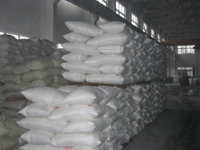
 Liaoning, China
Liaoning, China
 Liaoning, China
Liaoning, China
Send Email




Boric Acid / CAS 10043-35-3
OVERVIEW
Uses
- Borax Borax
- Boron Carbide Boron Carbide
- Potassium Fluoroborate Potassium Fluoroborate
- Diboron Trioxide Diboron Trioxide
- Ammonium Fluoborate Ammonium Fluoborate
- Tetrafluoroboric Acid Tetrafluoroboric Acid
- Barium Metaborate Barium Metaborate
- 1,4-Dihydroxyanthraquinone 1,4-Dihydroxyanthraquinone
- Sodium Perborate Sodium Perborate
- Tributyl Borate Tributyl Borate
- Lithium Bis(Oxalate)Borate Lithium Bis(Oxalate)Borate
Packaging
25 KG/Woven Bag
Lead Time
In Stock
REQUEST A QUOTATION
SubmitDESCRIPTION
Boric acid product introduction
Boric acid is a white powdery crystal or a scaly lustrous crystal with a triclinic axis surface, with a smooth hand feeling and no odor. Soluble in water, alcohol, glycerin, ethers and essential oils, the aqueous solution is weakly acidic. It is widely used in the glass (optical glass, acid-resistant glass, heat-resistant glass, glass fiber for insulating materials) industry, which can improve the heat resistance and transparency of glass products, increase the mechanical strength, and shorten the melting time.
nature:
Boric acid is actually a hydrate of boron oxide (B2O3·3H2O. The specific gravity is 1.435 (15°C). The solubility of boric acid in water increases with the rise of temperature and can volatilize with water vapor; the solubility in inorganic acids is better than that in inorganic acids. Water solubility is small. When heated to 70~100℃, it will gradually dehydrate to generate metaboric acid, when 150~160℃ it will generate pyroboric acid, and when 300℃ it will generate boric anhydride (B2O3).
use:
Boric acid is used in the enamel and ceramic industries to enhance the gloss and fastness of enamel products. It is also one of the ingredients of glazes and pigments. Used as an additive and cosolvent in the pharmaceutical industry and metallurgical industry, especially boron steel has high hardness and good rolling ductility, to replace nickel steel. Boric acid has antiseptic properties and can be used as a preservative, such as wood preservation. It is used in metal welding, leather, photography and other industries, as well as in the manufacture of dyes, heat-resistant and fire-resistant fabrics, artificial gems, capacitors, and cosmetics. It can also be used as pesticides and catalysts. Used in agriculture as boron-containing trace element fertilizer, it is effective for many crops and can increase the oil content of rapeseed. A variety of borides can be produced from boric acid, which are widely used in national defense and other industrial sectors and scientific research units.
Physical and Chemical Index of Boric Acid GB538-90
Index name | Executive standard | ||
Excellent grade | First grade | Qualified article | |
H3BO3% | 99.6-100.8 | 99.4-100.8 | 99.0 |
Water insoluble content %≤ | 0.01 | 0.04 | 0.06 |
Sulfate (calculated as SO4) content %≤ | 0.10 | 0.20 | 0.30 |
Chloride (in Cl) content %≤ | 0.05 | 0.10 | 0.15 |
Iron (Fe) content %≤ | 0.002 | 0.003 | 0.005 |
Typical Properties
API & Intermediate > Synthetic Anti Infective Drugs
GET SAMPLE
Submit- Overview
- Descriptions
- Sample
























